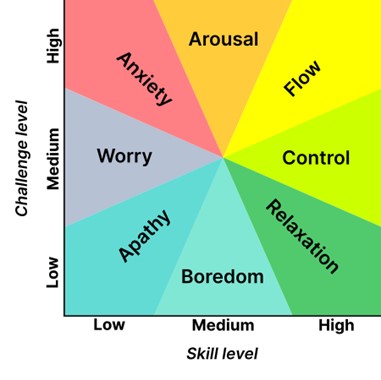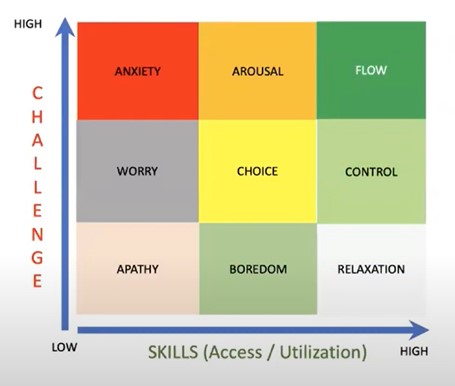As an entrepreneur, when you embark on the path of self-management, you are bound to encounter a myriad of hurdles along the way. An efficient and disciplined approach helps you focus on the tasks at hand while maintaining a stress-free view of life.
This article is part 3 of 4 in our series on Self-Management. It is based on the workshop session we had with Coach Cheenu G Srinivasan on dealing with challenges as part of the NICE Arohana 2 series. Cheenu is a certified Leadership, Executive and, HappYness Coach with over 15,000 hours of coaching experience. He believes that everyone in the world should attain both happiness and success in whatever they pursue.
Cheenu is a NICE Friend and is part of the NICE community.
- Part 1 – What is Self-Management and How Can You Improve it
- Part 2 – What Does it Take to Embrace the Idea of Self-Management
- Part 3 – Self-Management Challenges – How to Stay Focused
- Part 4 – Self-Care is Critical for Self-Management
Staying 100% focused – the SILSA method
Perform each task with complete focus. It may sound hard but is not impossible to achieve.
While working on anything, focus plays a major role in deciding the quality of the outcome. The more you focus, the better the results. Adjust your environment and surroundings to gain this focus.
Imagine if you were to choose between two tables – one that’s arranged neatly with your files and papers; and the other with the same things strewn all over. You would undoubtedly choose the latter because it offers more productivity.

Now, extend this to your thoughts. Imagine a mind that is well organized … much like the table. Isn’t that a better workspace for more concentration and focus?
Well, you can achieve it with the SILSA method:
- S – Scan your thoughts. Go through every bit of information on your mind. Even for an entrepreneur, you are bound to have personal and emotional thoughts that might distract you from work.
- I – Identify distractions. Pick out all the emotions, feelings and thoughts that come in the way of your current task. Running a business involves a great deal of risk. This might provoke you to worry about factors that might affect your work output. Identify these risks and thoughts.
- L – Label troubling factors. Go through them vividly and give them a tag. It could be your anxieties, concerns or lack of self-confidence coming in the way of the current task at hand.
- S – Set it all aside. Once you have listed exactly what your brain is up to other than the work at hand, it’s time to put them all away at the very back until you finish what you started. This helps in keeping your focus and giving out better results.
- A – Affirm yourself to stay 100% focused until you are done. Now that all your worries are set aside, you need to assert yourself to give your best. Channel your productivity into the task at hand and finish it successfully.

What’s the zone and how does one enter it?
In the words of the Hungarian-American psychologist Mihaly Csikszentmihalyi, “being in the zone” is a state of heightened focus and blissful immersion. This is when you work at your best so much so that you are not aware of anything else around you. He explains this concept of the zone or “flow” as he calls it with the help of a chart of Challenge Level vs Skill Level.

There are eight domains in the diagram based on the contribution of each of these levels. Mr. Cheenu takes the extra step, after a lot of research and study – to add another domain encircled by the above eight. He calls this the domain of mediocrity.

- The 3 domains at the bottom represent tasks we encounter on a regular basis. They aren’t challenging enough and do not require a substantial amount of skill to be used to perform them.
For instance, you are driving on a road full of traffic. There is no skill-set you can use to control it, so you are not worked up about the situation. You merely drive when given a chance to and wait for it to clear up eventually.
- The domain of Choice is where Cheenu believes a lot of important decisions are made. You are smack in the middle of the graph. Do you choose to upskill yourself by relearning and unlearning; or do you fall back to a state of no effort and outcome? This is the stage where he urges individuals to go up in the graph.
- The upper left side of the graph contains the most crucial domains, merely because that is where your zone lies.
The domains of Arousal, Control, and Flow fill you with the adrenaline rush – of pursuing something new and unknown.
You are facing a highly challenging task but you also have a high skill-set to overcome it.
Think of the first time you learned how to bicycle – you had to understand the gravity and balance yourself on two wheels to perform the task. The challenge was at par with your skill. A great deal of practice helped you tackle it.
Art of learning
The right way to learn is to succeed 85% of the time and to fail … the remaining 15% of the time.
A mistake is as good as positive criticism. If you learn and never repeat it again, it’s nothing short of a learning opportunity.
Summing Up
As an entrepreneur, focus and organizational skills are your best friends. Practicing the methods mentioned above can help you gain focus, enter the zone, and thrive as a successful and happy business person.
Continue reading Part 4 – Self-Care is Critical for Self-Management
If you missed reading the prev part, visit Part 2 – What Does it Take to Embrace the Idea of Self-Management
Watch the full session here.
Image credit: Unsplash




